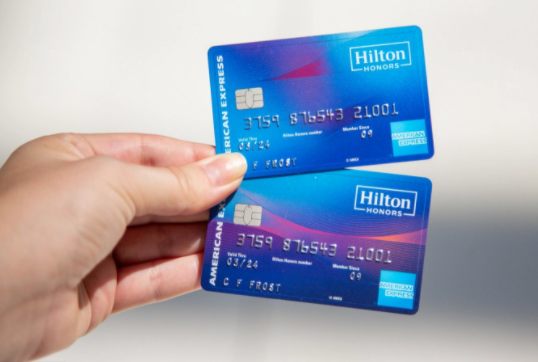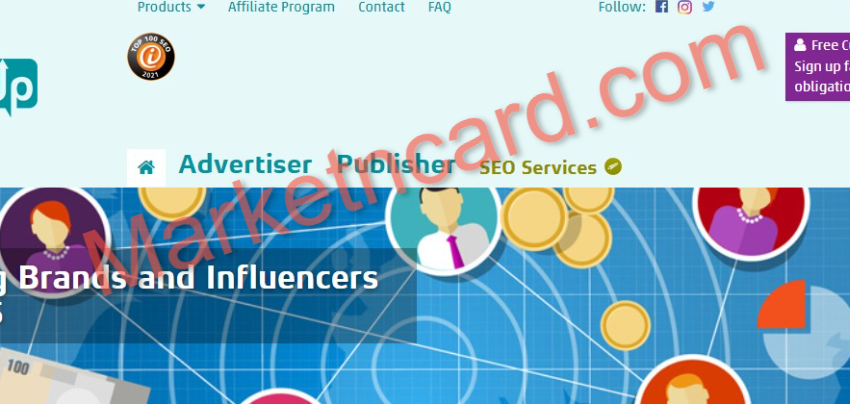Introduction
How To Increase Your Blog Traffic- Starting a blog is easy, but attracting a significant amount of traffic to it can be challenging. However, there are many ways to increase your blog traffic.
In this article, we will discuss some proven methods on How To Increase Your Blog Traffic and gain more visibility on search engines.
CHECK OUT: How To Make Money From Blogging – How To Start A Blog And Make Money In 2023
Organic Search Traffic vs Paid Traffic
In today’s world, having a blog is a great way to share your thoughts and ideas with the world. However, to make your blog successful, you need to drive traffic to it. There are two ways to do this: through organic search traffic and paid traffic.
Organic search traffic
Organic search traffic is the traffic that comes to your blog from search engines such as Google, Bing, and Yahoo. When someone types a query into a search engine, the search engine will provide a list of results that are relevant to the query. By optimizing your blog for search engines, you can increase the likelihood that your blog will appear at the top of the search results for relevant queries.
To optimize your blog for search engines, you can start by doing keyword research. This involves identifying the keywords that people are using to search for topics related to your blog. Once you have identified these keywords, you can incorporate them into your blog content, titles, and meta descriptions.
Paid traffic
Paid traffic, on the other hand, is the traffic that comes to your blog through paid ads. While paid traffic can bring instant results, it can be expensive. To get the most out of your paid traffic, you need to target your ads carefully. This means identifying your target audience and creating ads that are tailored to their interests and needs.
While paid traffic can be effective, it’s important to note that organic search traffic is free. However, it takes time and effort to build.
SEE ALSO: How Do I Make A Paid Blog? | 5 Proven Ways to Make Money Online Blogging
Optimize Your Website for Search Engines
If you’re looking to increase traffic to your blog, optimizing your website for search engines should be at the top of your priority list. One of the key aspects of search engine optimization (SEO) is to use relevant keywords in your blog posts. This means researching and using the terms and phrases that your target audience is searching for.
However, simply adding keywords to your blog posts is not enough. Your content must also be high-quality, informative, and engaging. Search engines prioritize content that provides value to readers, so make sure your posts are well-written and offer unique insights or perspectives.
In addition to using relevant keywords and creating quality content, you should also focus on optimizing your website’s meta tags.
This includes title tags, meta descriptions, and header tags, which help search engines understand what your content is about.
Your title tag should be a concise and descriptive summary of your blog post, while your meta description should provide additional information and encourage readers to click through to your post.
Header tags (H1, H2, H3, etc.) are used to organize your content and make it more readable for both humans and search engines.
By optimizing your website for search engines, you’ll be able to attract more organic traffic to your blog over time. This traffic may take longer to build than paid traffic, but it will be more sustainable and cost-effective in the long run.
SEE NOW: How Do I Make A Paid Blog?
Start Email Marketing Campaigns
If you’re looking for a way to drive more traffic to your blog, consider implementing an email marketing campaign.
Not only is email marketing a cost-effective way to promote your blog, but it’s also a great way to build and nurture relationships with your readers.
To start an email marketing campaign, you’ll need to build a list of subscribers. One effective way to do this is to offer a lead magnet or freebie that’s relevant to your blog’s niche.
For example, if your blog is about healthy living, you could offer a free recipe ebook in exchange for a reader’s email address.
Once you have a list of subscribers, you can start sending regular newsletters that include links to your latest blog posts.
It’s important to strike a balance between promoting your blog and providing value to your readers.
Your newsletters should include a mix of content, including links to your blog posts, tips and advice related to your niche, and any other relevant news or updates.
One advantage of email marketing is that it allows you to keep your readers engaged even when they’re not on your blog.
By sending regular newsletters, you can stay top-of-mind with your subscribers and encourage them to visit your blog regularly.
You can also use email marketing to promote special offers, events, or other content that may be of interest to your readers.
Overall, email marketing can be a highly effective way to drive traffic to your blog and build a loyal following of readers.
By offering value to your subscribers and keeping them engaged with your content, you can increase your blog’s visibility and attract more visitors over time.
Post on Social Media Regularly
Social media has become an indispensable part of our lives, and it can also be a powerful tool for bloggers to increase their traffic.
By sharing your blog posts on social media platforms such as Facebook, Twitter, LinkedIn, and Instagram, you can reach a wider audience and drive more traffic to your blog.
To make the most of social media, it’s important to have a clear strategy. First, identify which social media platforms your target audience uses the most, and focus on those platforms.
For example, if your blog is about professional topics, LinkedIn might be the best platform to share your posts.
Once you’ve identified the platforms to focus on, make sure you optimize your social media profiles. Use a clear and professional profile picture, write an engaging bio, and include a link to your blog.
When sharing your blog posts on social media, it’s important to use engaging and eye-catching visuals, such as images or videos, to grab your audience’s attention. Use relevant hashtags to make your posts more discoverable, and engage with your followers by responding to comments and messages.
You can also consider using social media advertising to promote your blog posts to a targeted audience. This can help you reach new readers and drive more traffic to your blog.
CHECK MORE: How to Start a Blog That Makes You Money | How Do I Make A Paid Blog – Complete Guide
Write Great Content
To have a successful blog, creating great content is crucial. Writing engaging and informative posts that appeal to your target audience can help drive traffic to your site. With so much content available online, it is essential to create high-quality posts that stand out from the crowd.
To achieve this, it is essential to research your audience and understand what they are interested in reading. Once you have identified your target audience, you can tailor your content to meet their needs and preferences. Additionally, make sure to use a clear and concise writing style that is easy to read and understand.
Incorporating visuals such as images, infographics, and videos can also make your content more appealing and help to break up long blocks of text. Using visual aids can also help convey information more effectively and make your content more memorable.
Another important aspect of creating great content is ensuring that it is shareable. Including social sharing buttons on your blog posts can make it easy for readers to share your content on their social media platforms, helping to increase your reach and visibility.
Ultimately, creating great content requires a combination of careful research, writing skills, and the ability to engage with your audience.
Make Your Site Mobile-friendly
With the increasing use of smartphones and tablets, more people are accessing the internet through their mobile devices than ever before. As a blogger, you need to make sure that your site is mobile-friendly to ensure that your content is easily accessible to your audience, regardless of the device they are using.
Mobile optimization involves making sure that your site is easily navigable, loads quickly, and looks good on a small screen. Using responsive design is one of the best ways to optimize your site for mobile devices. This design approach ensures that your site adjusts to different screen sizes, making it easier to use on mobile devices.
In addition, you should optimize your site for faster loading times. Slow page load times can negatively impact your search engine ranking and discourage visitors from returning to your site. To speed up your site, optimize your images, use caching, and minimize the number of plugins you use.
Audit Outdated Content
Regularly updating your blog content is crucial to maintaining a high level of engagement with your audience. Outdated content not only can harm your blog’s SEO but also make it less attractive to readers. It’s essential to regularly audit your blog and remove or update any outdated content.
When auditing your blog, pay attention to the following elements:
- The date of your blog posts: Make sure your blog posts are current and up-to-date. If a post is outdated, consider updating it or removing it altogether.
- Broken links: Check for broken links on your blog and fix them. Broken links can harm your SEO and frustrate readers.
- Low-performing content: Analyze your blog’s analytics to identify low-performing content. You can update it, repurpose it, or remove it entirely.
- Duplicate content: Avoid duplicate content on your blog, as it can harm your SEO. Use tools like Copyscape to check for duplicate content on your blog.
By regularly auditing your blog and removing or updating outdated content, you can improve your search engine ranking and increase your blog traffic.
It’s a simple yet effective way to keep your blog fresh and engaging for your audience.
Implement an Affiliate Program
One way to drive more traffic to your blog is by implementing an affiliate program. This program involves partnering with other bloggers, businesses or influencers who can help promote your blog or products in exchange for a commission.
By offering commissions, you incentivize others to share your blog with their audiences, which can help expand your reach and increase your blog traffic.
To get started with an affiliate program, you can create an affiliate link for your blog and share it with potential partners.
This link will contain a unique code that tracks any clicks and sales generated through the partner’s promotion of your blog.
You can also provide partners with banners, text links, or other promotional materials to help them promote your blog more effectively.
When creating your affiliate program, it’s essential to set clear expectations and guidelines for your partners.
This includes the commission rate, payout schedule, and promotional guidelines to ensure your brand is accurately represented.
By setting clear expectations, you can establish a mutually beneficial partnership and increase your blog traffic.
Additionally, tracking the performance of your affiliate program is crucial. You can use various analytics tools to monitor the traffic and sales generated through your affiliates.
By tracking this data, you can determine which partners are most effective and adjust your program accordingly to maximize its impact on your blog traffic.
Perform External Link-building
External link-building is a crucial component of any successful SEO strategy.
When other websites link to your blog, search engines consider it as a sign of authority and credibility. This, in turn, can improve your search engine ranking and drive more traffic to your blog.
However, it’s essential to focus on getting quality links from relevant and authoritative websites.
This means reaching out to other bloggers or websites in your niche and asking them to link to your blog. One way to do this is to create high-quality, informative content that other bloggers or websites would want to link to.
Another strategy is to guest post on other blogs and includes a link back to your blog in your author bio or within the content. This can help you reach a new audience and drive traffic to your blog.
It’s important to note that link-building should be done ethically and naturally. Avoid purchasing links or engaging in link schemes that violate search engine guidelines. Such practices can harm your blog’s reputation and search engine ranking in the long run.
Link Internally
Internal linking is an essential aspect of a successful blog strategy. It is the practice of linking to other pages or blog posts within your website. By doing so, you can create a web of interconnected content that helps visitors navigate your site easily and helps search engines understand your site’s structure better.
Internal linking has numerous benefits for your blog. Firstly, it can improve your site’s navigation and user experience. When visitors can easily find related content, they are more likely to stay on your site longer and engage with your content. Additionally, internal linking can help spread the link equity or ranking power throughout your site. This can lead to improved search engine ranking for your blog posts and pages.
To take advantage of internal linking, start by linking to relevant posts and pages within your blog. For example, if you have written a blog post about SEO optimization, you could link to another post on keyword research. This not only helps readers find more useful content on your site but also helps search engines understand the relationship between the two posts.
Another way to improve internal linking is to create pillar content. This is a comprehensive guide or resource on a particular topic that you can link to from multiple posts. By doing this, you are creating a central hub of information that readers can refer to while also boosting the authority and ranking of your pillar content.
In addition to linking to your own content, you can also link to external sources. This can provide additional value to your readers and help establish your blog as a reliable source of information. However, it’s important to ensure that the external links are relevant and high-quality, as this can also affect your site’s ranking.
Conclusion
Increasing your blog traffic takes time and effort, but it is possible with the right strategies. Use a combination of these methods to increase your blog traffic and gain more visibility on search engines. By following these tips, you can increase your blog traffic and take your blog to the next level.





